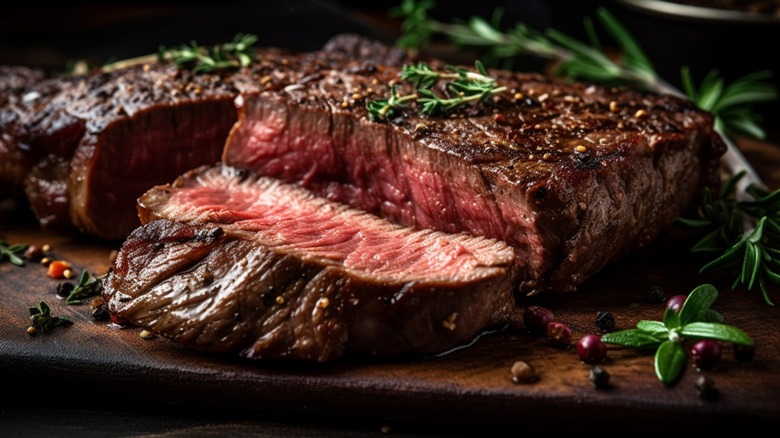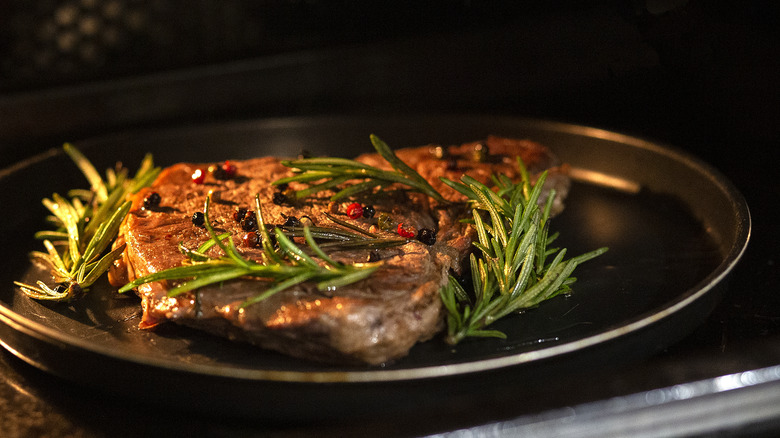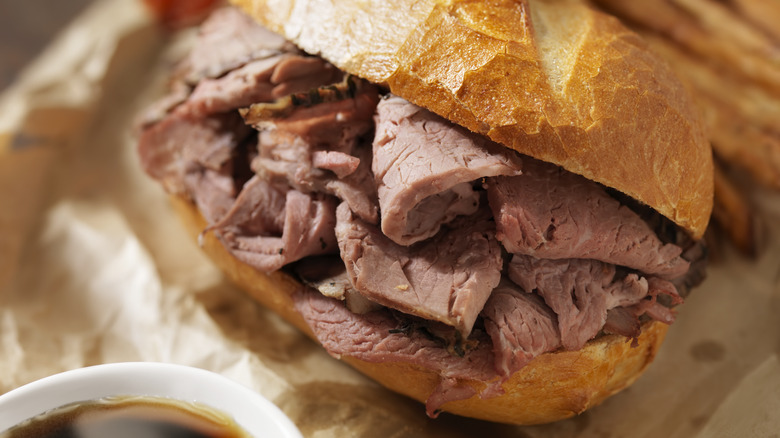You Should Stop Using The Microwave To Reheat Steak
Nothing beats the delectable flavors of a juicy, well-made steak — unless you're reheating them as leftovers. While you may know of the many mistakes to avoid when cooking steak, few have mastered the art of warming up a delectable cut of tenderloin or ribeye without it turning into a leathery, gray lump. Provided you have some time on your hands, keep your leftover meat away from the microwave.
Because microwaves work by indirectly cooking the inside of your food with radio waves, the inside of your steak will warm up much more rapidly than its exterior. Water molecules are particularly susceptible to your microwave's emissions, as they'll typically be the first particles that will rapidly mobilize during the microwaving process, creating heat as they do. Unfortunately, the juices inside the meat are not exempt from this reaction, and only a short amount of time in the microwave will zap the moisture out of your steak.
Instead of using your microwave to turn your steak into a dry mess, pop your leftovers into an oven at around 250 degrees Fahrenheit. This method will warm up your steak without overcooking its insides, leaving you with a juicy, actually edible cut of meat.
Reverse sear your steak and thank us later
If you have a little extra time and energy while you slowly reheat your steak back up to temperature, take out your skillet and reverse-sear your steak. Once your steak has warmed up, remove your leftovers from the oven and give them a quick sear in a bubblingly hot cast-iron pan. Experts say that the best steaks to reverse sear are thick cuts, so don't try this method on thin variants like flank steaks.
Once you've seared and browned both sides of your steak or your leftovers have reached the U.S. Department of Agriculture's recommended temperature of 145 degrees Fahrenheit, take your steak out of the skillet and let it rest for a few minutes before serving. Resting allows for the juices to settle throughout the meat, allowing the entire leftover steak to become tender in just a few minutes. Some moisture will inevitably leave your leftover meat during the reheating process, but you can mitigate this issue by pouring in some gravy or steak sauce over it.
Alternatively, serve your leftover steak as a cold cut
Not everyone has the time to preheat their oven and reverse heat leftovers, especially if you're just coming back home and in need of a quick, easy meal. Luckily, you can easily turn your refrigerated steak into a cold cut for a salad, sandwich, or even a wrap. You can easily make and customize all three of these suggestions within a few minutes, and they all won't require you to dirty up cookware such as a baking tray or cast iron skillet.
With all that said, keep this serving method only in mind for chilled or room-temperature dishes. While cold, thinly sliced steak shines best in a sub, it probably won't hold up well against a warm side of mashed potatoes and sauteed asparagus. A grilled steak salad with roasted garlic buttermilk dressing, however, is delicious and the perfect opportunity for leftover steak.
Regardless of whether you choose to reheat your leftover steak or use it as a cold cut, remember that the U.S. Department of Agriculture states that cooked beef lasts in the fridge for up to four days tops. Any longer puts you at risk of mold or foodborne pathogens such as salmonella, so plan your meals according to this deadline.



